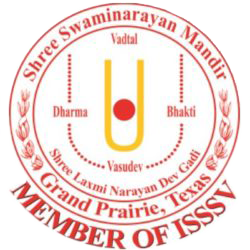Many of us know the story of Lord Sri Ram who was exiled to the forest for 14 years by his step-mother Kaykay. There, He encountered many demons, whom He fought and rid the world of.
Brother Laksman and wife Sitaji had also accompanied Him to the forest. A demon by the name of Ravan was encapsulated by the beauty of Sitaji and he kidnapped her through deception. As Lord Sri Ram was a loving husband He searched high and low for Sitaji. Lord Sri Ram enlisted the aid of the monkey army which was led by King Sugriv. Hanumanji was one of Sugriv’s commanders and he became particularly attached to Lord Ram.
Lord Sri Ram found Sitaji in Lanka and built a path on the ocean to reach there. A fierce battle between the armies of Lord Sri Ram and Ravan began. Many great soldiers were killed. It was on Vijay Dashmi, (the tenth day of the Hindu month of Ashvin which usually falls in September or October) that the great battle between Lord Sri Ram and Ravan took place.
Ravan was a devout bhakta of Lord Shiva. As a result, he was gifted with ten heads and it was impossible to defeat him. But what is impossible for God? Nothing! Lord Sri Ram aimed an arrow to the belly button of Ravan and thus, the demon that caused havoc across the three worlds was killed.
As a celebration of this defeat of good over evil, each year devotees making a massive statue of Ravan and burn it on this auspicious day. Although, the tradition does differ in different regions of India, the sense of victory is agreed by all. In India, this day also marks the beginning of the harvesting season, and prayers and poojas are performed to the Lord so that the devotees reap a good harvest.
It is also noted that on this day, the Goddess Durga (the form of the Goddess on a tiger) defeated the buffalo demon known as Mahishasur. The battle lasted nine days and nights and the evil demon was defeated on the tenth day.

